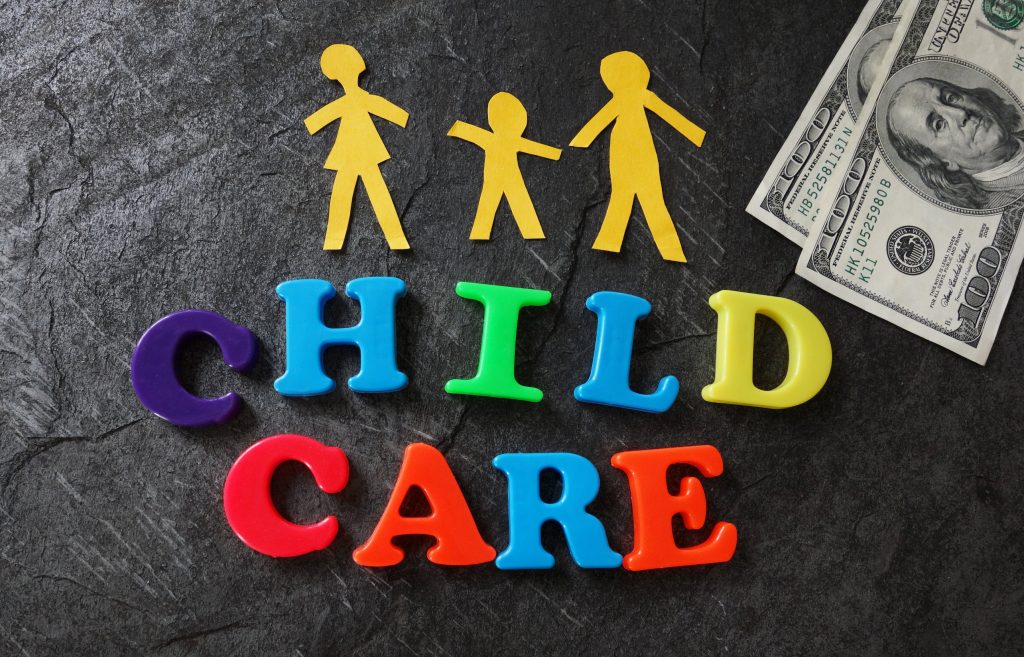Last week we discussed what employment expenses are, and who can deduct these types of expenses. If you missed that blog, you can find that blog right here.
Today I will be blogging about a subject that is very important to me as a parent. Many new parents ask me what tax breaks/benefits are available to them now that they have become parents.
Throughout this blog I will be discussing various benefits: some that are available in past years, and other benefits that have been available to parents in the past but since removed due to change in the government.
Benefits for Single and Separated Parents
The first benefit only applies to single parents. If a parent has sole custody over a child because of a separation agreement and receives benefits from the other parent, that parent will be able to claim the child as an eligible dependant. This non-refundable tax credit is like having the credit for a spouse with no income, you will essentially be able to claim the basic exemption twice federally, and almost the maximum for the provincial credit. If two separated parents have 50-50 custody and no agreement in place for one to pay the other support, there is a choice on who can make the claim for the eligible dependant. Also, if these separated parents have two children, they can each make a claim for one child.
Benefits for Parents of Children with Disabilities
If your child has a disability, you are able to file for a disability tax credit which will be transferred to you since your child would not need to claim that disability. The disability tax form T2201 is filled out by the child’s physician and sent to the CRA. Upon acceptance, the credit will be exercised on the parent’s tax return. The credit would be used on the parent that has enough taxable income to benefit from the transference of the disability tax credit. This very much like the eligible dependant credit, if the parent has no taxable income, unfortunately it would not produce any tax benefit.
Canada Child Benefit
Another benefit to being a parent is receiving a benefit such as the Canada Child Benefit (formerly Child Tax Benefit). This benefit is based on income, although the Liberal government has proposed increases to the CCB the parent/parents, with families with lower family incomes receiving higher benefits. The CCB isn’t only income based but depending on the age of the child as well, families with children below 6 can receive as much as $6,496 in 2018 and $5,481 if the children are 6-17. The benefit is substantially more when the child has a disability, once the parents apply for the disability tax credit they will automatically adjust the CCB amount.
Registered Disability Savings Plan (RDSP)
Parents that have a child with a disability can also find solace in the Registered Disability Savings Plan (RDSP). It is designed as a long-term savings plan to help disabled persons be better financially prepared for the future. For people living on a low income (below $30,000) the federal government will include up to $1,000 into this plan each year for up to 20 years in the form of the Canada Disability Savings Bond. For family income less than $91,831 on the first $500 contributed in the RDSP, the beneficiary will receive $3 for each $1 contributed, for the next $1,000 it will be $2 for each $1 contributed. Maximum grant for any one year is $3,500 and a life time grant of $70,000. If the beneficiary’s income is above $91,831 then they will receive $1 for each contributed amount up to $1,000. Once the child turns 18, the income qualification is on the disabled individual.

Registered Education Savings Plan (RESP)
Your child can also qualify for the Registered Education Savings Plan (RESP). This benefit is for you to save up for your child/children’s education in the future when they plan on going attending post-secondary education. The government has provided great benefit here as well. If you have low income, they will initially start you off with a $500 bond. However if you don’t qualify, they will match 20% of whatever you contribute into the RESP account. This amount is capped at an annual limit of $1,000 which is 20% on $5,000 deposit (an amount that is a limit for 2 years). The lifetime limit for an RESP Grant amount is $7,200 with a plan maximum of $50,000. If you have not contributed to your child’s RESP in early years, you are able to contribute in their latter years by doubling up the deposits in a given year. The government will also give a higher benefit on the first $500 if the parents combined income is very low.
If you have any questions about the RDSP and RESP investment
accounts, or if you need any help setting one up please contact me here. I can
help you through Canfin Magellan Investments, a brokerage I deal with for
investment purposes.
Child Care Expenses
Another opportunity for you as a parent is to be able to deduct child care expenses. If both parents are working, or one is taking part time/full time education, the CRA will allow a deduction of child care expenses on the person’s tax return who earns the lower income (unless that person is taking part time/full time education). Unlike the other earlier credits that I have discussed, the child care expense is a deduction against an individual’s income and therefore it affects them at their highest tax level whatever that may be. That is why the preference is to deduct it on the person with the higher income level. How is that achieved? Well one can only do this if the other parent is taking full time/part time education, it will be based on either weeks or months. The amount of expense a parent can also deduct is based on the child’s age, if the child or children are under the age of 7, a parent can deduct $8,000 per child. If that child is 7 to 16 years old, then a parent can only deduct $5,000.
Other ways to plan for your children’s’ future
Parents often wonder how they can benefit their children in the future outside of RESP’s and RDSP’s for those that have a disability. A parent should obviously get a life insurance policy on themselves in case anything happens to them. However not many parents think about buying a life insurance policy on the child. When they are born, the life insurance will be cheapest since they are so young and based on the statistics that life insurance companies use your child should have a long life. Therefore it is wise to consider purchasing a life insurance policy on your child for the future. How can they benefit with life insurance policies? Well for one, if you purchase a permanent insurance the premium amounts will be minimal because they will be very young and have many years to pay the premiums. The life insurance can be used as policy for them in the future when they get married and have kids. Or, if a parent buys them a policy with an investment component like a Universal Life Policy or a Whole Life Policy, then the insurance will grow in value over the years, and the child, when they become an adult, will be able to take some money out of that insurance policy (possibly when they decide to buy a property). It will be very difficult for them to be able to afford anything in the future, and this is one way you can help save up money for them.

A few benefits that have since come and gone
The child amount was a federal non-refundable tax credit that allowed a parent with a benefit per child of about $2,000 which translated into a tax break of $300 per child.
The government also got rid of the fitness credits and the art amounts. These credits were both federal and provincial credits at roughly $1,000 and $500 non-refundable tax credits respectively per child. At the end they were very minimal, but it helped parents cope with cost of sports activities and other arts programs that parents were paying out of their pocket.
Another credit that since has been removed was income splitting for families. This required a couple to a have a child or children under the age of 18 in order to be able to use the benefit. The proposed policy in the day allowed these families to split their household income of up to $50,000, the maximum benefit a family derived from this split was $2,000 a year. Unfortunately this is not around anymore.
There have been many benefits that have come and gone, and as tax professionals, we are always up to date with any benefits. Ask your accountant about what you qualify for.
In the meantime if you have any ideas for a blog please contact me here and ask what you would like me to discuss in my next week’s article.
